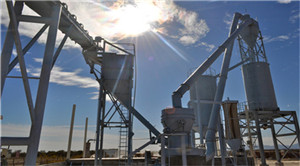Efficient removal of impurities from arsenic-containing defective copper concentrates
2024-03-01 Xinhai (1681)
2024-03-01 Xinhai (1681)
If you have any questions, please contact us through the following ways, we will give you more and better assistance!

There are a large number of porphyry copper deposits in my country, containing molybdenum, arsenic, zinc, aluminum, etc. Copper concentrate is often obtained using conventional flotation processes, but impurities such as molybdenum, arsenic, zinc, and aluminum are usually present in copper concentrate. Molybdenum, aluminum, and zinc are all valuable metals worth recycling, but when the arsenic content in copper concentrate is higher than 0.5%, arsenic will reduce the economic value of the copper concentrate.

Copper concentrates containing less than 0.5% arsenic are generally processed using smelting/converter technology. Although copper concentrate contains large amounts of arsenic, the smelting/conversion technology carries the potential risk of environmental contamination with toxic arsenic compounds. Additionally, the presence of arsenic in the copper concentrate can lead to a decrease in the quality of the final copper cathode.
There is a defective copper concentrate with high arsenic content (2.17%) and low molybdenum content (2.62%), produced in Tibet, China. Due to its high arsenic content and low molybdenum content, the copper concentrate has low economic value and is difficult to sell. Therefore, the removal of impurities from this defective concentrate becomes a focus of attention.
Methods for removing arsenic from copper concentrates have been studied, such as alkali leaching and acid leaching, such as using Na 2 S-NaOH, NaHS-NaOH and NaOH-H 2 O 2 media to leach sulfarsenic copper ore, marcasite and The chalcopyrite is leached by oxidation with H 2 O 2 at pH 5.0, and the chalcopyrite is leached using atmospheric pressure in acidic iron sulfate medium. Likewise, wet leaching methods have been studied for the separation of molybdenum from sulfide ores, including oxygen pressure, sodium hypochlorite, electro-oxidation and bioleaching methods.
In order to better understand the leaching behavior of metals during alkali leaching, defective copper concentrate containing chalcopyrite, ferromanganite and molybdenum was selected as raw material in this study. It is first dried in an oven overnight to remove moisture and then sieved to collect particles smaller than 0.075 mm.

All leaching experiments were performed in Erlenmeyer flasks using a shaker. Copper concentrate samples are used in 20 to 100 gram scales. The liquid-to-solid ratio is 2/1 to 10/1mL/g. Temperature variation studies were conducted between 20°C and a high temperature of 70°C. The concentrations of NaOH and H 2 O 2 were varied from 0.5 to 2.5 mol/L and 0.4 to 1.4 mol/L, respectively. The leaching time is also from 1 hour to 7 hours. After a certain leaching treatment, the slurry was taken out of the reactor, vacuum filtered, and washed twice with 400 mL of distilled water. Use a graduated cylinder to measure the volume of the filtered mother liquor, collect a 5 mL liquid sample, and use an inductively coupled plasma atomic emission spectrometer to measure molybdenum, copper, arsenic, and zinc. The residue is dried at 105°C for 8 hours. The dried residue was used for analysis.
The results show that the removal rates of Mo, As, and Zn increase with the increase of leaching time and H 2 O 2 concentration, and as the liquid-to-solid ratio increases, the removal rates of Mo, As, and Zn first increase and then decrease slightly. , temperature and NaOH concentration, respectively. Under optimal conditions, more than 95% of Mo, 94% of As and 94% of Zn were removed from the off-grade concentrate, while only 1.7% of Cu was dissolved.